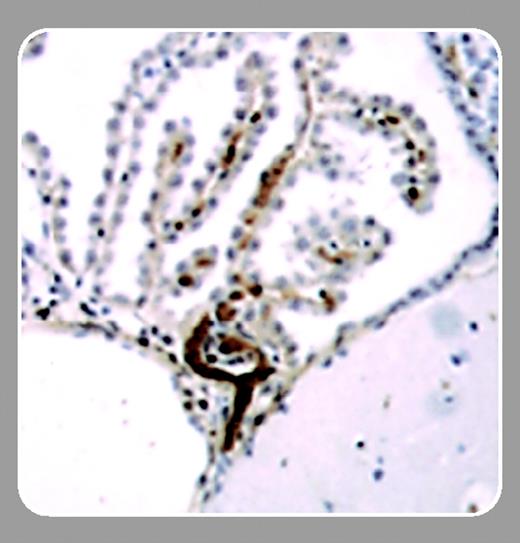The C-terminal regions of fibrinogen γ chains contribute to platelet adhesion and aggregation, fibrin assembly and cross-linking, and platelet-mediated clot retraction. Several other fibrin functions are localized to other regions of the molecule, including one involving sequestration of thrombin (“antithrombin I”).1 Until the article by Jiroušková and colleagues (page 1995) in this issue of Blood, it was unclear how such functionalities, which can serve to either promote or limit thrombosis, contributed to arterial thrombus formation. Their study has made some important inroads toward solving this puzzle by meticulously comparing thrombus formation in the carotid arteries of afibrinogenemic mice (fbg–/–) with that occurring in mice whose fibrinogen molecules lacked the γ chain platelet-binding motif (γΔ5), or in wild-type mice that had been treated with 7E9, a blocking antibody to the fibrinogen γ chain C-terminus. Large thrombi formed in fbg–/– mice, no doubt reflecting thrombin-mediated platelet thrombus formation. Consistent with previous studies, such platelet thrombi abruptly embolized downstream. In contrast, γΔ5 mice or wild-type mice treated with 7E9 developed only small, nonocclusive mural thrombi that had a limited tendency to embolize. Such thrombi could not recruit platelets into the thrombus, but they retained their ability to polymerize and to bind and sequester thrombin, suggesting that this sequence of events provided the basis for the reduced effect. In contrast, previous investigations of smaller-caliber arterial vessels (mesenteric arterioles) had demonstrated a greater tendency for thrombi from γΔ5 mice to embolize as well as to form an occlusive thrombus.2 Taken together, the findings indicate that differences in blood vessel size contribute to the complexity of fibrinogen's prothrombotic and antithrombotic effects. Such differences need to be taken into account when the efficacy of antithrombotic agents is being evaluated.
Skip Nav Destination
INSIDE BLOOD|
March 15, 2004
Fibrinogen contributions to arterial thrombus formation: vessel size counts Free
Michael W. Mosesson
Michael W. Mosesson
The Blood Center of Southeastern Wisconsin
Search for other works by this author on:
Blood (2004) 103 (6): 1977–1978.
Connected Content
Citation
Michael W. Mosesson; Fibrinogen contributions to arterial thrombus formation: vessel size counts. Blood 2004; 103 (6): 1977–1978. doi: https://doi.org/10.1182/blood-2004-01-0038
Download citation file:
March 15 2004
Advertisement intended for health care professionals
Cited By
Advertisement intended for health care professionals


This feature is available to Subscribers Only
Sign In or Create an Account Close Modal